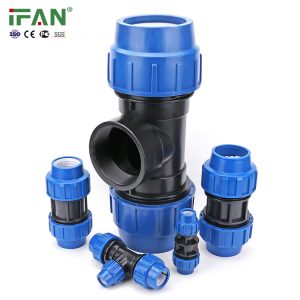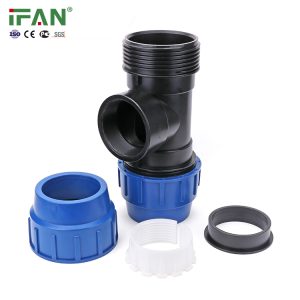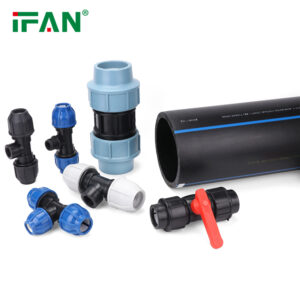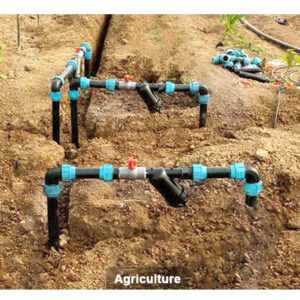
ISO 4427 HDPE Fittings in the Oil and Gas Industry: A Reliable Solution for Harsh Environments
Whatsapp Us
Share
Description
IFAN factory 30+ years manufacture experience support color /size customization support free sample.Welcome to consult for catalog and free samples.This is our Facebook Website:www.facebook.com,Click to watch IFAN’s product video.Compared with Tomex products, our IFAN products from quality to price are your best choice, welcome to buy!
Introduction
In the oil and gas industry, the reliability and durability of pipeline systems are paramount. Harsh environmental conditions, such as extreme temperatures, high pressure, and corrosive substances, demand materials that can withstand these stresses. High-Density Polyethylene (HDPE) fittings have emerged as a reliable and cost-effective solution for these challenges. This article explores the role of HDPE fittings in the oil and gas industry, highlighting their benefits, applications, and why they are preferred in demanding environments.
What Are HDPE Fittings?
HDPE fittings are components used to connect, control, or terminate the flow of fluids in HDPE pipe systems. Made from high-density polyethylene, these fittings are designed to offer high resistance to corrosion, chemicals, and physical wear. Their versatility makes them an ideal choice for industries like oil and gas, where systems need to endure high-pressure environments and exposure to aggressive substances.
Why HDPE Fittings Are Ideal for Oil and Gas
1. Resistance to Corrosion
One of the primary challenges in the oil and gas industry is the risk of corrosion. Traditional metal pipes and fittings can degrade over time when exposed to corrosive materials, leading to costly repairs and maintenance. HDPE fittings, however, are highly resistant to corrosion from a wide range of chemicals, including acids, bases, and salts, making them ideal for use in pipelines transporting oil, gas, and other chemicals.
2. Durability in Extreme Temperatures
HDPE fittings are known for their ability to withstand a broad range of temperatures. In the oil and gas industry, environments can range from freezing cold to extreme heat. HDPE fittings are capable of withstanding these temperature extremes without cracking or becoming brittle, which ensures the long-term integrity of the pipeline systems.
3. Impact Resistance
The oil and gas industry often involves harsh physical conditions, including the risk of accidental impacts or shifting loads. HDPE fittings are highly impact-resistant, meaning they can handle external forces without breaking or deforming. This makes them particularly well-suited for installations in rugged or remote locations, where they may be exposed to harsh conditions.
4. Flexibility and Ease of Installation
HDPE fittings are lightweight and flexible, making them easy to transport and install. The flexibility of HDPE allows it to expand and contract without cracking, making it ideal for areas where ground movement or seismic activity may occur. Additionally, the installation process is simpler compared to traditional metal pipes, requiring fewer specialized tools and reducing overall labor costs.
5. Leak-Free Performance
In the oil and gas industry, leaks are a significant safety concern. HDPE fittings are known for their leak-free performance due to the fusion welding process used to join HDPE pipes and fittings. This process creates a homogenous bond that is stronger than the material itself, ensuring that there are no weak points or gaps where leaks can occur.
Applications of HDPE Fittings in the Oil and Gas Industry
1. Pipeline Systems
HDPE fittings are commonly used in pipeline systems that transport oil, gas, and chemicals. Their resistance to corrosion and high pressure makes them suitable for both upstream and downstream applications. Whether for transporting crude oil, natural gas, or water, HDPE fittings can ensure the integrity and reliability of the pipeline.
2. Offshore and Subsea Installations
Offshore oil rigs and subsea pipelines face some of the most challenging environmental conditions, including saltwater corrosion and high pressures. HDPE fittings offer an excellent solution for these applications, providing durability and resistance to marine environments while ensuring a secure, leak-free operation.
3. Hydraulic Systems
In hydraulic systems used for drilling, HDPE fittings are invaluable. These systems require reliable, strong, and corrosion-resistant components to handle the high pressures involved in drilling operations. HDPE fittings’ ability to endure pressure while maintaining leak-proof connections makes them a popular choice.
4. Gas Distribution Networks
For natural gas distribution systems, HDPE fittings are widely used due to their excellent resistance to chemicals and their ability to handle fluctuating pressures. Their long lifespan reduces the frequency of replacements, making them a cost-effective solution for gas utilities.
5. Water Management Systems
HDPE fittings are also used in water management systems in the oil and gas industry. These systems are crucial for maintaining the flow of water for cooling and other purposes. HDPE’s resistance to scaling and fouling ensures that water systems remain operational even under tough conditions.
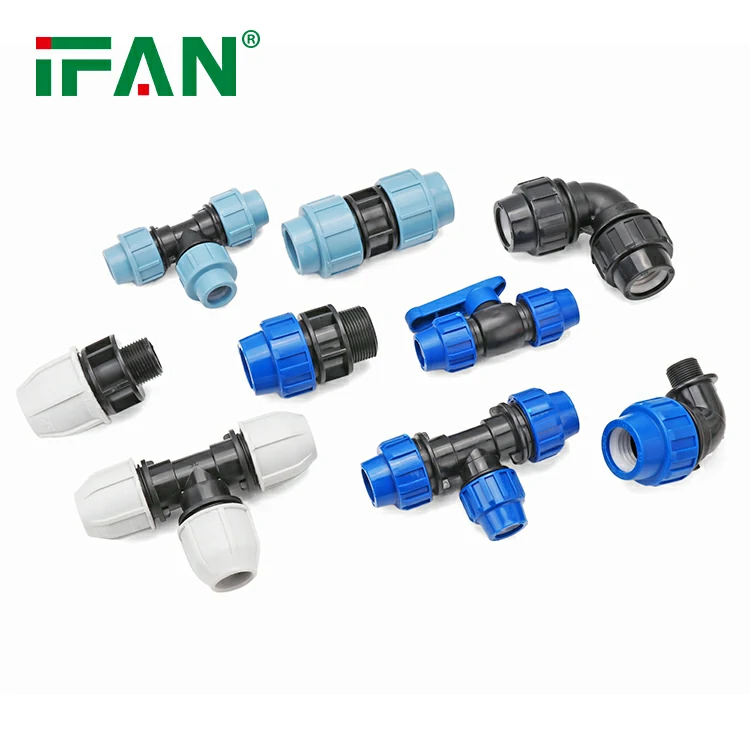
Advantages of HDPE Fittings for the Oil and Gas Industry
1. Cost-Effectiveness: While the initial cost of HDPE fittings may be higher than some traditional materials, their longevity, ease of installation, and low maintenance needs make them cost-effective in the long run.
2. Environmental Sustainability: HDPE fittings are recyclable, making them an environmentally friendly option compared to materials that contribute to landfill waste.
3. Versatility: HDPE fittings are available in a wide range of sizes, shapes, and configurations, making them adaptable for numerous applications within the oil and gas sector.
4. Long-Term Performance: HDPE fittings are known for their durability, ensuring that they will perform well over the long term, reducing the need for frequent replacements and maintenance.
5. Safety: The robust nature of HDPE fittings helps reduce the risk of leaks, spills, and accidents, which are crucial safety concerns in the oil and gas industry.
Challenges and Considerations
While HDPE fittings offer numerous benefits, there are some considerations to keep in mind when choosing them for oil and gas applications. First, the material’s performance can be affected by UV radiation, so proper shielding is necessary for outdoor installations. Additionally, while HDPE fittings are resistant to most chemicals, there may be specific substances that can degrade the material. Always ensure that HDPE is compatible with the fluids being transported.
Conclusion
HDPE fittings offer a reliable and effective solution for the oil and gas industry, particularly in harsh environments where corrosion, extreme temperatures, and high pressure are common challenges. Their durability, flexibility, and leak-free performance make them an essential component of modern pipeline systems. By choosing HDPE fittings, operators can enhance the efficiency and safety of their operations while reducing long-term maintenance costs.
FAQs About HDPE Fittings in the Oil and Gas Industry
1. What is the lifespan of HDPE fittings in the oil and gas industry?
HDPE fittings are designed to last for decades. When installed correctly and maintained properly, they can last between 50 to 100 years.
2. Are HDPE fittings suitable for high-pressure applications?
Yes, HDPE fittings are designed to handle high-pressure applications. They maintain their structural integrity under pressure, making them ideal for use in the oil and gas industry.
3. Can HDPE fittings withstand extreme temperatures?
HDPE fittings can withstand a wide range of temperatures, typically from -40°C to 60°C, without losing their performance.
4. Do HDPE fittings require special installation techniques?
While HDPE fittings are easy to install, they do require specific fusion welding techniques to ensure leak-free and strong connections. Specialized equipment may be needed for the fusion process.
5. Are HDPE fittings more expensive than traditional metal fittings
HDPE fittings may have a higher initial cost compared to some metal fittings, but their long lifespan and lower maintenance costs make them more cost-effective over time.


